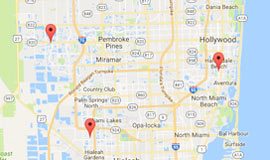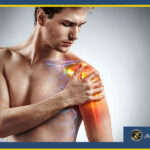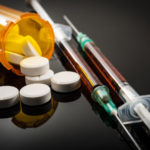PRP Therapy for Joints
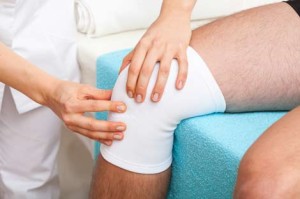 Orthopedic surgeons have been intrigued for a while by how various types of injuries— including surgical wounds— respond to Platelet Rich Plasma (PRP) therapy.
Orthopedic surgeons have been intrigued for a while by how various types of injuries— including surgical wounds— respond to Platelet Rich Plasma (PRP) therapy.
Over the past few years, there has been a tidal wave of research about PRP’s effects on tennis elbow, Achilles tendonitis, inflammation of the patellar tendon, shoulder dysfunction and other non-sports-related and sports related injuries.
As sports medicine specialists, we are interested in any technology that promises to help our patients return to full activity with minimal pain and recovery time.
Positive Results From Studies of Knee Patients
Two years ago, researchers at the Hospital for Special Surgery in New York, NY, one of the world’s leading orthopedic centers, published a paper showing that PRP not only relieved pain and improved function in patients with knee osteoarthritis, but also appeared to slow the progress of the disease.
Previous studies have shown that patients with osteoarthritis lose about 5 percent of their knee cartilage each year. HSS patients who were treated with PRP showed no loss of cartilage when examined one year later. They also reported less pain and showed less stiffness and better joint function.
The shoulder is another area of great interest. Our shoulders are composed of two joints, either of which is susceptible to arthritis. When the cartilage wears thin, moving the shoulder through its normal range of motion— from reaching up to grab something from a shelf to flinging your arms wide when you see your grandchild— becomes painful.
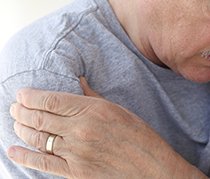 Treating Rotator Cuff Injury With PRP Therapy
Treating Rotator Cuff Injury With PRP Therapy
Rotator cuff injuries, which often are caused by inflammation, may be one of the most intriguing applications for PRP. While the standard medical approach has been to try six months of conservative therapy before resorting to surgery, PRP may speed the healing and shorten this trial period.
Knee and Hip Replacement Alternative
At All-Pro Orthopedics and Sports Medicine, we have developed a proprietary version of PRP that utilizes the patient’s stem cells found in their body’s fat to provide even further growth and healing benefits to patients with serious knee or hip injuries.
As with any PRP treatment, Dr. Shaw will take a simple blood draw from the patient. The blood will be spun in a centrifuge to isolate the plasma in order to reintroduce a more potent and healing rich version of the patient’s blood. For patients considering knee or hip replacement surgery, Dr. Shaw can utilize his proprietary PRP treatment that also utilizes the patient’s own stem cells to enhance the patient’s healing and tissue repair processes. By boosting the already impressive healing effects of standard PRP therapy, Dr. Shaw’s unique treatment can help patients avoid risky hip and knee replacement surgeries.
There is no maximum or minimum age for PRP therapy. It’s been used on school-age athletes with hamstring injuries and on Grandpa’s frozen shoulder. The goal in applying PRP therapy to professional athletes was to reduce their time away from the game. That same objective holds for mature patients with arthritic disabilities.
If you’ve been suffering from an arthritis-related problem and are growing impatient with conservative treatment, call our clinic. We serve patients from Pembroke Pines, Plantation, Davie, Miami Gardens, Weston FL, Miramar, Aventura and Fort Lauderdale.
PRP therapy could be the treatment you need to get back in the game sooner.
Common Questions about Platelet-Rich Plasma for Joints
What is platelet-rich plasma?
Platelet-rich plasma (PRP) consists of two key components: plasma and platelets. Growth factors and platelets are abundant in PRP. Compared to normal blood, platelet-rich plasma has 94% more platelets and five to ten times more growth factors.
Most of your blood is made up of plasma, the liquid portion of blood, which acts as a transporter and carries nutrients. Even though platelets are only a fraction of your blood volume, they play a vital role in wound healing and blood clotting.
Growth factors found in platelets promote cell reproduction to repair damaged tissue and prevent further damage. Our specialists in Florida utilize platelet-rich plasma for trauma and joint injury.
What can platelet-rich plasma do?
PRP is packed with growth factors that accelerate the healing of injured tendons, ligaments, muscles, and joints.
Platelet-rich plasma for joints treatment works by concentrating platelets and delivering them to areas needing healing. It can assist with wound healing following trauma and joint injury.
In patients with knee osteoarthritis, PRP provided pain relief, improved function, and slowed disease progression. PRP is also an excellent treatment for rotator cuff injuries and an alternative to knee and hip replacements.
How does platelet-rich plasma for joints work?
Platelets contribute to the healing process. They are responsible for clotting and contain growth factors that stimulate cell reproduction and tissue regeneration.
Venous blood is extracted from the arm. It is then centrifuged to separate the platelets from the red blood cells. The concentrated plasma contains the growth factors and cytokines responsible for alleviating painful symptoms and promoting healing.
The platelet-rich plasma is then injected into areas of the body where healing is desired, such as in the joints and injured tissue.
Who will benefit from platelet-rich plasma for joints?
Everyone can benefit from PRP. There are no age restrictions for PRP treatment.
Florida’s platelet-rich plasma for joints is a pain management approach that reduces inflammation and swelling and provides a fast, safe and effective healing process.
The purpose of PRP therapy for professional athletes is to reduce their time away from the game. This objective also applies to mature patients with arthritic disabilities. It’s been used on school-age and professional athletes and can be used for Grandpa’s frozen shoulder.
Is platelet-rich plasma safe?
Due to the fact that PRP injections are created from your own blood, there are very few side effects associated with them.
In addition, our specialists from our Florida locations are trained in performing PRP therapy for a wide variety of non-sports-related and sports-related injuries.
Which injuries can I use platelet-rich plasma for joints for?
Platelet-rich plasma jumpstarts the healing process and speeds it up. It can be used in various sports injuries, such as tennis elbow, rotator cuff injuries, and plantar fasciitis. Basically, we can treat non-sports-related and sports-related injuries with platelet-rich plasma for joints.
Is platelet-rich plasma for joints painful?
No, the process is not painful. Instead, it’s quick and easy! Plus, PRP therapy reduces the need for surgery. The only invasive part of the procedure is drawing the blood, which is not really painful.









